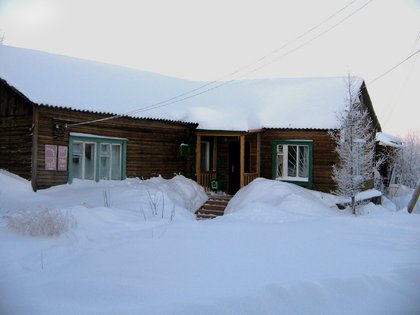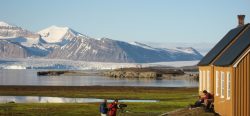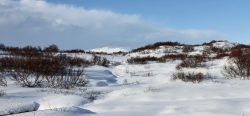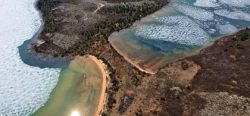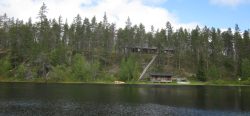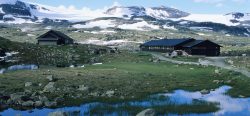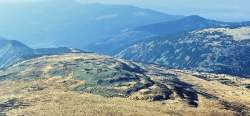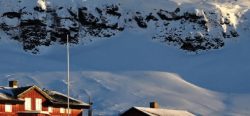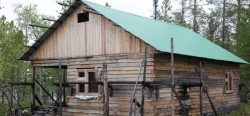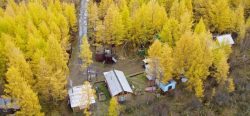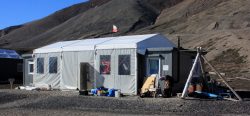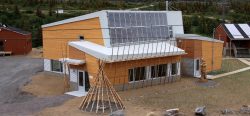Contact Details
Institute of Plant and Animal Ecology
Ural Branch
Russian Academy of Sciences
629400, Zelenaya Gorka Str., 21,
Labytnangi
Yamal-Nenets Autonomous District
Russia
- Phone: +7 34992 51889
- Fax: +7 34992 51887
Collaborator in the project until spring 2022
STATION NAME AND OWNER
The ArcticDefinitions of the Arctic vary according to environmental, geographical, political, cultural and scientific perspectives. Some scientists define the Arctic as areas having a high latitude, long winters, short, cool summers,... More Research Station (former Labytnangi Ecological Research Station) is owned and managed by the Institute of Plant and Animal EcologyThe study of living organisms in their environment, including where they are found and how they interact with their physical environment and with each other, for example through food webs.... More of the Ural Branch of the Russian Academy of Sciences.
LOCATION
The station is located in the town Labytnangi (66,6595° N, 66,4092° E), Yamal-Nenets Autonomous District, Russia. The nearest larger town is Salekhard (less than 20 km to the Southeast) – capital of YNAD. Labytnangi is situated on the bank of the Ob’ River – one of the largest rivers in the world.
BIODIVERSITY AND NATURAL ENVIRONMENT
Labytnangi (c. 25 000 inhabitants) is situated in the forest-tundra zone of the Yamal Peninsula. In very close vicinity there are different geographical zones: taigaBoreal forest, a nearly continuous belt of coniferous trees across North America and Eurasia. Taiga is dense forest with many fallen trees and marshy soil. The term derives form the southern Siberian Turkic-Mongol... More zone to the south and up by the Ob River, shrubby tundraA type of ecosystem in which tree growth is limited by low temperatures. The origin of the word is from from the Kildin Sami word t?ndâr, meaning "uplands" or "treeless mountain tract". In the northern... More zone begins to the north from the town, Polar Ural mountains is in 40 km to the west. Yamal Peninsula is the area were most eastern populations of many European species of floraThe plants that live in a particular region, habitat or time (such as geological period like the jurassic). For animals, we use the term fauna, and to collectively refer to all... More and faunaThe animals that live in a particular region, habitat or time (such as geological period like the jurassic). For plants, we use the term flora, and to collectively refer to all... More meet most western populations of many Siberian species. Both taigaBoreal forest, a nearly continuous belt of coniferous trees across North America and Eurasia. Taiga is dense forest with many fallen trees and marshy soil. The term derives form the southern Siberian Turkic-Mongol... More and tundraA type of ecosystem in which tree growth is limited by low temperatures. The origin of the word is from from the Kildin Sami word t?ndâr, meaning "uplands" or "treeless mountain tract". In the northern... More species are present in the area.
HISTORY AND FACILITIES
The station was established in 1954, driven by two main aims, i.e. (i) to conduct ecosystemAll the living organisms (including people) in an area as well as its physical environment, functioning together as a unit. An ecosystem is made up of plants, animals, microorganisms, soil,... More studies on a year-round basis by the own staff of researchers, and (ii) to create a logistics base for the researchers of core Institute of Plant and Animal EcologyThe study of living organisms in their environment, including where they are found and how they interact with their physical environment and with each other, for example through food webs.... More (Yekaterinburg) and for other Universities. The 3,2 ha of station territory situated almost on the center of Labytnangi, consists of office and lab buildings, a garage and storage for expedition equipment. In 2016, the office building was renewed, and a new garage was built. Telephone, fax, copy machines, and computer with Internet access are available at the Station. The station can host 20-25 people at a time and a wide variety of field equipment is available for rent. A meteostation measuring basic weather parameters started at the station in 2015. Since 2000, every year researchers of the ARS run a terrestrial tundraA type of ecosystem in which tree growth is limited by low temperatures. The origin of the word is from from the Kildin Sami word t?ndâr, meaning "uplands" or "treeless mountain tract". In the northern... More ecosystems monitoring program on the base of latitudinal gradient of field stations along the Yamal peninsula: “Kharp”(66,77 N), “Erkuta” (68,22 N), “Sabetta” (71,19 N), “Beliy Island” (73,33 N). For example,the field station “Erkuta”, with the support of Yamal Government,is now equipped with several containers for living and equipment storage, as well as a lab. The facility is supplied by a solar power station and can be used year round.
GENERAL RESEARCH AND DATABASES
Researchers of the ARS study tundraA type of ecosystem in which tree growth is limited by low temperatures. The origin of the word is from from the Kildin Sami word t?ndâr, meaning "uplands" or "treeless mountain tract". In the northern... More terrestrial ecosystems focused on plant-herbivory-predator levels. Long-term studies on small rodents have been carried out for more than 50 years in different sub-zones of the Yamal Peninsula. Population dynamics of birds have been monitored since the 1970s. Researchers of the ARS are active participants of world working groups of researchers on Snowy Owl, ArcticDefinitions of the Arctic vary according to environmental, geographical, political, cultural and scientific perspectives. Some scientists define the Arctic as areas having a high latitude, long winters, short, cool summers,... More Fox, Small Rodents, ArcticDefinitions of the Arctic vary according to environmental, geographical, political, cultural and scientific perspectives. Some scientists define the Arctic as areas having a high latitude, long winters, short, cool summers,... More Falcons and several other species. The Yamal peninsula provides unique possibilities for researchers to simultaneously measure the effects of all three major drivers of modern changes: (i) fast industrial development and population growth, (ii) climate changeAccording to the United Nations Framework Convention on Climate Change, climate change is change in the climate of the whole Earth or a region of the Earth that is believed... More, (iii) extensive reindeer herding – nowadays YNAD has the biggest reindeer herd in the world (ca. 700 000 animals). Additionally, researchers from the core Institute who work on the base of ARS have for about 40 years every year carried out r monitoring of fish resources of YNAD. The ArcticDefinitions of the Arctic vary according to environmental, geographical, political, cultural and scientific perspectives. Some scientists define the Arctic as areas having a high latitude, long winters, short, cool summers,... More Research Station cooperates with a number of international partners, mainly from other northern countries.
HUMAN DIMENSION
The Yamal-Nenets Autonomous District is one of the largest regions in the Russian Federation. It occupies a vast territory of 770 000 km2, and is primarily known for its large deposits of hydrocarbon raw materials. The population of indigenousBelonging to a certain place. Indigenous people are distinct ethnic groups that have historic connections to people who lived in a territory prior to the area being colonized or coming... More people (Nenets) is growing and is today about 40 000. Yamal is one of the few places in the world where the traditional way of life is well preserved and about 15 000 of the inhabitants still live a traditional nomadic life.
ACCESS
There is a railway station in Labytnangi with trains to Moscow three times a week (a 48 hour trip). The airport is situated in capital of YNAD – Salekhard, just on the other bank of the Ob’ River, with several daily flights to Moscow (3 hours), Tyumen (1,5 hours) and some other destinations. Regular helicopter flights to small villages are also available. There is no need to obtain any special permits to visit cities Labytnangi, Salekhard or ArcticDefinitions of the Arctic vary according to environmental, geographical, political, cultural and scientific perspectives. Some scientists define the Arctic as areas having a high latitude, long winters, short, cool summers,... More Research Station.
